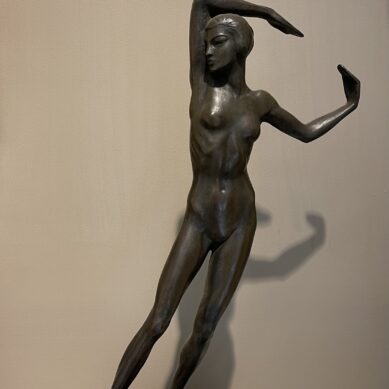You searched
Painter
Raffaele Armenise
Are you interested in the sales or the purchase of his artworks?
We buy works of this artist
and of other painters and sculptors from the 16th century to the first half of the 20th century
The Berardi gallery offers a free and without obligation service for evaluation of ancient and modern art . To find your way in the art market, very complex and full of nuances, it is better to rely on a professional consultant who can answer fast and concretely to your needs. The clarity of the answers will resolve effectively the need to estimate or sell an asset.
Contact us immediately without commitment
Answers also in 24 hours:
Raffaele Armenise
Raffaele Armenise
He began studying painting in Bari, under the guidance of Nicola Zito. After winning a provincial competition, he managed to move to Naples where he perfected his skills by enrolling at the Academy of Fine Arts. He followed the courses of Domenico Morelli, Federico Maldarelli and Filippo Palizzi, thus receiving a fundamental influence from the Neapolitan school. Having completed his studies, in 1875 he opened a studio in Capodimonte, where he devoted himself mainly to genre painting, which brought him immediate market success.
He made his debut at the 1872 Neapolitan Promotrice with the painting La cucina del villaggio (The Village Kitchen) and continued to exhibit there until 1880. To 1875 date Il favorito and Un pompeiano, to 1877 Uno scotto troppo caro and to 1878 Un agguato di bravi. But one of his best-known works, L’usuraio ebreo (The Jewish Usurer), now in the Banco di Napoli Collection, dates from 1879 and is famous for its careful, calligraphic realism inspired by Palizzi.
After marrying one of the daughters of the painter Leopoldina Zanetti, he moved to Milan in 1881 and here began working at his father-in-law Borsino’s oleographic factory. He reproduced a number of works, e.g. those of Raffaele Postiglione, through oleographic printing and at the same time collaborated with a number of magazines, such as ‘L’Illustrazione italiana’ with drawings and illustrations. In the meantime, he continued his exhibition activity always under the sign of genre painting: in Milan in 1881 he presented Gli addormentati and Costume spagnolo, in 1883 at the National Exhibition of Fine Arts in Rome he sent I compari di S. Giovanni and Chi è sazio non crede al digiuno. In Venice, in 1887, he exhibited Beer, Wine and The Village Feast.
At the same time, he devoted himself to a series of public commissions: an artist experimenting with various techniques, he frescoed Villa Bernasconi in Mendrisio, near Milan, while in 1898 he was called to Bari to decorate the Petruzzelli theatre together with Pasquale Duretti. He painted allegories of Music, Dance and Poetry on the ceiling, and portraits of the most important Apulian musicians on the sides. All around, on the vault, a series of mythological subjects.
Influenced to the end by the realism of the Neapolitan school and Filippo Palizzi in particular, he devoted himself to genre painting and a series of landscapes dedicated to Apulia until the 1920s. At the Milan Exhibition of 1906, he presented Le grotte di Polignano (The Caves of Polignano) and much later, at the Bari Biennial of 1924, he exhibited an extremely similar motif, Ponte vecchio a Polignano (Old Bridge in Polignano), an indication that his expression was not excessively original or changeable over the years.
His works include: Un’ora di quiete, Ricordo dell’Adriatico, Infanzia e buon cuore, La nota troppo cara!, La prova del veleno, Una grossa risata, Per un filtro d’amore, Questua festosa.
Elena Lago






